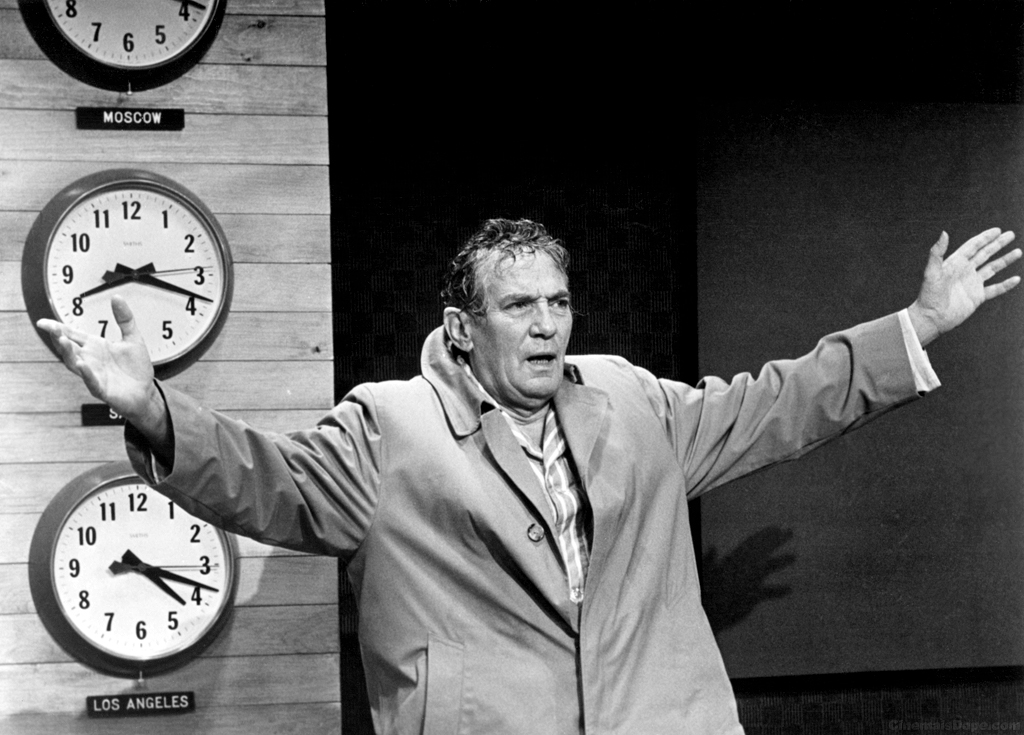From Books to Action, Sceptical to Being Embraced: A Real Estate Model

As an Adjunct Faculty member at Franklin L. Burns School of Real Estate and Construction Management Professor at the Daniels College of Business, University of Denver Kyle Cascioli has had the opportunity to investigate the Real Estate market at length. Gaining knowledge is what the student is expected to gain but as an instructor Kyle has also gained valuable insight and knowledge from his work. It was through a case study on a book ‘How to Sell Your House in Five Days’ by Bill Effros that Mr. Cascioli had an “aha” moment.
In the Movie “Network,” Peter Finch played an evening news anchor (Howard Beale) who, upon learning that he is about to be fired for low ratings, announces that he will commit suicide by “blowing his brains out” during an upcoming newscast. The fictitious network (UBS) fires him, but only after allowing him to apologize and bid farewell to his audience. Ratings skyrocket, and news executives decide to keep him on the air. In the movie, there is a landmark scene in which anchor Howard Beale sets viewers on a rage with his impassioned plea that they (viewers) open their windows during a lighting storm and shout out that they are “mad as hell and not going to take it anymore.”
Just as Beale criticized network TV for dictating to consumers what programming they needed, today’s consumers are angry about their lack of choices and the feeling that the residential real estate industry is dictating the terms for buying and selling homes.
In an article written in 2007, Cascioli too used the quote as his title “I’m mad as hell and I’m not going to take it anymore,” to discuss the residential market implosion and explain why the real estate down-cycle that began in early 2007 was the beginning of a “watershed” event.
For the many reasons cited in that article, this watershed event was a harbinger of things to come (pre-financial markets implosion of October 2008), and that its psychological impact would lead to a paradigm change in the way property owners and investors looked at traditional real estate transactions. At the time, I wasn’t sure what form this paradigm shift would take, but I knew that significant changes in how investors and end-property users bought, leased, and sold commercial real estate was on the way.
Needless to say, the financial markets implosion in 2008 only further exacerbated investor and end-user frustration with traditional, mostly passive, real estate sales practices. This coupled with the ensuing real estate “structural price correction,” after a century of normal real estate business cycles, has forced all commercial real estate investors and practitioners to revaluate their approach to real estate acquisition and disposition. They decided to look into lesser-known aspects of real estate investing – like learning how to calculate debt yield or flipping commercial properties as a way to stay profitable in their investments.
So what have been the historic commercial property and debt owners’ options when it comes to buying and selling real estate? Traditional commercial real estate transaction options include the passive Brokerage Listing approach, In-House leasing (direct sales efforts), and traditional auctioning.
Let’s take a closer look at the auctioning approach.
In Mr. Cascioli’s opinion, there is an historic negative bias in the United States when it comes to the auctioning of real estate. While real estate auctioning has been a normal, mainstream approach in the U.K., South Africa, and Australia for many decades, there has been, and continues to be a stigma associated with real estate auctioning in the U.S. Why is this?
Exotic art, cars, and Jewelry have been sold via the auction process for centuries. Since 1929, our American way of life has been financed by the auctioning of Treasury Bills, Bonds, and Notes. And with respect to these products and financial instruments, auctioning is the preferred and most efficient manner of sale. So why then is there so much stigma associated with the auctioning of real estate in the United States? The reason seems simple.
Historically, and especially since the S&L crisis of the late 1980’s, which resulted in the creation of the Resolution Trust Corporation (RTC) real estate auctioning in the U.S. has primarily been applied to distressed real estate product such as foreclosures and bank-owned properties (REO), and this certainly holds true in today’s marketplace (2011).
Kyle Cascioli founded the “AuctionBySeller” ( www.AuctionBySeller.com ) family of online, non-distressed, residential real estate auction platforms in 2007 to provide a fourth (non-distressed auctioning model), price competitive, and viable real estate transaction option to those frustrated with the three traditional approaches to property and debt sales cited above. Since that time, our model has been performing for our clients.
Change is constant and those who fail to change, evolve, and embrace new business models are often left in time’s wake. An entire new generation of commercial real estate property & debt owners, investors, and brokers are looking at new and innovative real estate property and debt business models, and using technology to enhance their transaction capabilities to find more efficient ways to buy and sell property and debt in these challenging times.
Cascioli believes that our new, non-distressed, online, commercial real estate auction model is effective, sustainable, and will continue to be embraced by the commercial real estate community even after this severe real estate price correction has stabilized.
Experience this new model today. The Frisco Retail Auction event takes place at Frisco Station “Unit 18” 842 Summit Blvd., Frisco, CO or check the website to get an idea of how this deal changing auction works!
~Allison Battista
